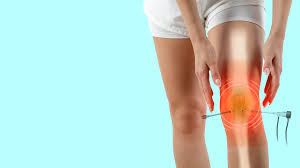Orthopedic surgery can be a significant step toward reducing joint pain and improving mobility. Recovery, however, is a process that requires patience and preparation. Understanding what lies ahead may help you be more prepared for the road to recovery. Here is more information on what you can expect during recovery from orthopedic surgery for joint pain:
Activity Modifications and Rest
After orthopedic surgery, changes in physical activity will be necessary. Rest is a foundational element, as it allows the body to focus on healing. Surgeons often recommend avoiding high-impact or strenuous movements to protect the surgical area. Individuals recovering from knee or hip surgery may use mobility aids like crutches or walkers to reduce weight-bearing pressure on the joint.
While rest is prioritized immediately after surgery, light movement may gradually be introduced to prevent stiffness, improve circulation, and reduce swelling. Specific guidelines provided by your medical team address safe ways to move during this time. Following these steps can reduce the likelihood of re-injury and help build a stable recovery foundation. Daily activities, such as walking or performing household tasks, may include restrictions in the short term. Long-term activity modifications will depend on the procedure performed and your overall health.
Pain and Swelling Management
Pain and swelling are common after orthopedic surgery and may vary depending on the individual and the type of procedure. Your medical team will often provide a plan to help manage both. This plan may include medications like over-the-counter pain relievers or prescribed medications, as well as non-pharmaceutical methods such as cold therapy or elevation of the operated area.
Elevating the joint can help reduce swelling, particularly when combined with rest and the periodic use of ice packs. Compression wraps or garments may also be given to assist with inflammation control. Patients are generally advised to monitor pain levels and communicate with their healthcare providers if they experience any unexpected or severe discomfort. While some pain and swelling can be expected, these side effects tend to diminish with time. Tracking progress and being consistent with recovery practices are key parts of this phase.
Physical Rehabilitation and Exercises
Physical rehabilitation plays a central role in recovery from joint-related orthopedic surgery. Many patients work alongside physical therapists to perform exercises designed to strengthen the muscles surrounding the joint and restore range of motion. These exercises are typically introduced gradually, beginning with mild stretches and progressing to more targeted strengthening activities.
Rehabilitation exercises also aim to prevent long-term stiffness and instability in the operated joint. Therapists may create a customized therapy plan that includes both in-office sessions and at-home exercises. Adherence to these plans contributes to smoother mobility improvements over time. Rehabilitation may involve equipment such as resistance bands, exercise bikes, or balance boards, depending on the stage of recovery.
Find an Orthopedic Surgery Practice
Recovery from orthopedic surgery for joint pain involves a combination of rest, proper pain management strategies, and a focus on physical rehabilitation. Temporary activity modifications allow the joint to heal, while a gradual increase in movement helps restore normal function. Pain and swelling are natural elements of recovery, but they can be effectively managed through prescribed methods and monitoring. Physical rehabilitation strengthens the joint and supports long-term mobility improvements. Schedule a consultation with your orthopedic team if you have questions about any part of the recovery process.

